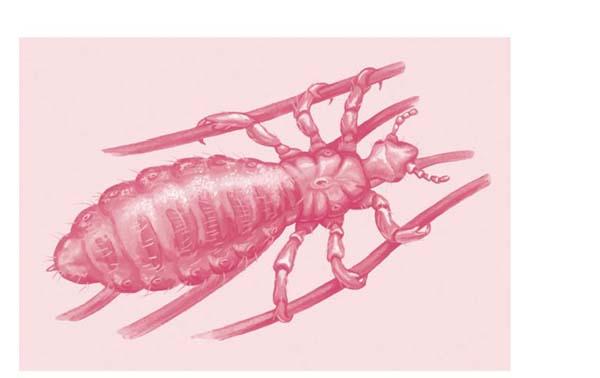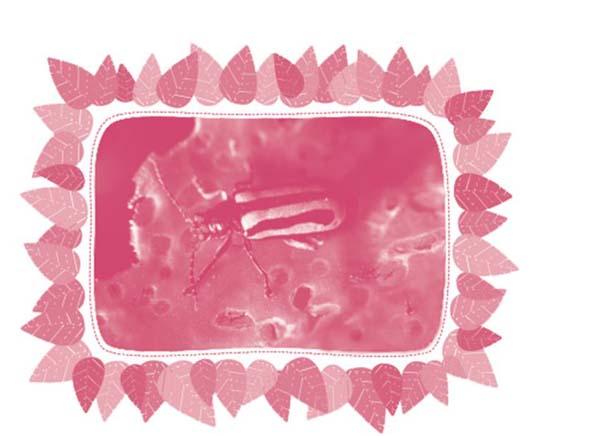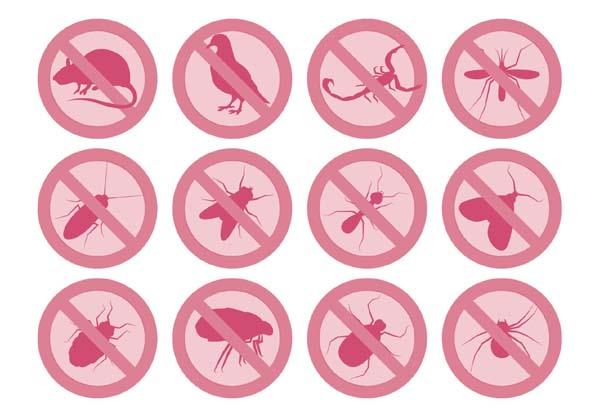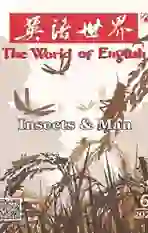The History of Pest Control 虫 害 防 治 史
2020-08-07罗怀宇
罗怀宇



Pest control is something that many know and even practice. Many may, however, not have bothered to wonder how it all started in the first place. How did pest control begin?
Some believe that pest control is as old as agriculture is. Considering that pest control is the management of any animal life that in one way or another interferes with the operations of humans and that such have always been referred to as pests and sought to be controlled, it makes sense to assume that pest control is at least as old as farming.
However, given that farming is thought to have begun sometime in 8000 BC and that the first documented instance of pest control was sometime in 3000 BC, this claim appears not to have any documented evidence to back it up.
Around 3000 BC, Egyptians were known to have practiced a form of pest control which involved the use of cats as pest control agents in grain stores. The cats protected the grains stores from rodents. This is the oldest recorded form of pest control, a practice which is very much in use today.
Actually, the use of predators as pest control tools has been better refined over the years and has now gone far beyond just the use of cats in the control of rodents.
The first documented record of chemical pest control was sometime in 2500BC. The Sumerians who kept this record have for long been regarded as the earliest people to be regarded as civilized.
Their region—Sumer—which is located somewhere in todays Kuwait and Iraq is also regarded as where civilization began.
Their record of pest control showed that they used sulfur as a means of controlling insects. This was the very first of such record. No other record of pest control emerged until about 1500 BC when cultural control of plants was recorded to have been used.
Farmers started trying to control pests by playing around with the planting dates and other farming practices. Methods like these are still used today in the control of pests.
By 1200 BC, we find another record of botanical insecticides being used as pest control. These were used by some farmers in China as fungicides in the treatment of seeds.
The next known record of pest control was in 950 BC when people started trying to control pest through weed burning. If practiced in farming, this certainly will have to occur before the actual planting.
Chinese records from as early as 500 BC showed that attempts were made at controlling lice on the human body with arsenic and mercury. Records from around the same period also show that Egyptians started practicing using nets over sleeping individuals as a means of controlling against mosquito bites.
Next stop is 200 BC when it is recorded that the Chinese and Egyptians started using oils and herbs as a means of controlling pests. It is, however, not on record if this was successful or not.
By 300 AD, using predators as means of pest control was again recorded. In this case, it is recorded that predatory mites were used by Chinese farmers as a pest control tool in their citrus orchards.
By 400 AD, another instance of arsenic being used as a form of pest control was recorded. In this case, arsenic was used by farmers in their rice paddies to prevent infestation by insects. The arsenic was applied to the roots of the plants.
600 years later in 1000 AD, the Arabs are shown to have taken the predatory approach to pest control. Certain species of insects from a region were introduced into date plantations in another region to feed on the local insects that were feeding on the date plants.
In all the history listed so far, the Europeans were not in the picture at all. They came on the scene sometime in the 1700s when certain scientists from Sweden started studying and keeping records of pests. This made it easier for other scientists and farmers to come up with ways to control these pests.
By 1750, scientists found that pyrethrum and derris were effective for use as botanical insecticides. With the growing awareness, the 1800s saw a spread and sharing of pest control techniques as practiced by individuals. These were distributed through papers and books.
By 1873, the French tried to control grape phylloxera (Tyrogluphus phylloxera) with the predatory mites from the Americas and by 1880, a spraying machine suitable for commercial use was successfully introduced.
Americans had some success in 1888 with pest control for citrus crops. This was by means of biological pest control agents brought in from Australia.
By the year 1890, lead arsenic had become very common as a pest control agent. Its popularity continued for about 10 years by which time the health hazards associated with it become known. This awareness led to Canada instituting a law banning the use of harmful chemicals in the spraying of blooming trees as a form of pest control.
By the early 1900s, precisely 1901, weed control through biological means was successfully implemented in Hawaii while in 1921 Ohio began its first aerial application of insecticides.
Needless to say, the advancements made in the 1900s were in quick succession. 1930 saw farmers controlling plant pathogens with the use of synthetic organic compounds while benzene hexachloride and DDT were discovered to be effective for us as insecticides.
A few short years later (1948), discussions started moving towards the necessity of certain beneficial insects. Eventually, in 1959 the idea or framework for integrated pest management was laid by some scientists namely K.S. Hagen, R. van den Bosch, S.M. Stern and R.F. Smith. The name “integrated pest control” was to be adopted eight years later in 1967.
With the framework laid, the National Environment Policy Act was passed by the United States and integrated pest management as a term was formally ratified by the National Academy of Sciences.
By 1972 the U.S. Department of Agriculture started funding integrated pest management research and the Federal Environmental Pesticides Control Act was passed. By the 1980s, IPM techniques had started yielding positive results around the world.
One of the results of IPM was genetically modified crops which were first made commercially available in 1996. However, by 2006 there were growing concerns as to the suitability of these genetically modified crops. These concerns led to certain aspects of the IPM techniques being put on hold.
The history of pest control is pretty long and quite interesting. The advancements made in recent times have come in quick succession and show no signs of slowing down. As users begin to pay closer attention to what they use for pest control, a pressure is put on manufacturers as well as regulatory bodies to put in more effort into ensuring only safe products and methods are used.
Tomorrows history is being written by us today.
很多人都知道防治蟲害,甚至亲手消灭过害虫。然而,很多人或许从未费神去了解这最初是如何开始的。那么,虫害防治是怎样开始的呢?
有人认为虫害防治和农业一样古老。考虑到虫害防治是指治理以某种方式干扰人类活动的任何动物,并且人们一直将它们称为有害动物并试图加以防控,我们有理由相信虫害防治至少与农耕一样历史悠久。
然而,这种看法似乎缺乏任何文献证据支撑,因为一般认为农耕始于公元前8000年前后,而对虫害防治的最早文献记载出现在公元前3000年前后。
大约公元前3000年,古埃及人据说就实行了一种防治方法,即用猫来对付粮仓里的有害动物。这些猫保护粮仓免遭啮齿动物的袭扰。这是有文字记载的最古老的虫害防治法,时至今日仍广为使用。
实际上,随着时代的变迁,使用捕食性动物治理虫害这一办法已大大改良,如今早已不仅仅是用猫来防治啮齿动物了。
化学防治虫害的最早文献记载大约出现在公元前2500年。留下这一记载的苏美尔人一直被认为是历史上最早进入文明时期的人类。
他们所在的地区苏美尔——大致位于今天的科威特和伊拉克——也被认为是人类文明的发祥地。
防治记录表明,他们将硫黄用于灭虫。这是最早的相关史料。之后直到公元前1500年前后才出现其他防治记录,那时人们已对作物采取栽培防治。
农民开始通过摸索最佳种植时间、尝试其他耕作方法来治理虫害。时至今日,此类办法仍用于虫害防治。
到了公元前1200年,有新的记载显示当时已使用植物杀虫剂防治虫害。中国有些农民在处理种子时用它们来灭除真菌。
下一个存世的虫害防治记录来自公元前950年,当时的人们开始尝试焚烧杂草治理虫害。当然,耕作实践中,必须在实际栽种前进行焚烧。
中国的史料表明,早在公元前500年,人们已经尝试使用砒霜和水银去除身上的虱子。大约同时期的记录表明,古埃及人开始用网帐罩住睡觉之人,防止他们被蚊虫叮咬。
接着是公元前200年,根据记载,当时的中国人和古埃及人已经开始使用精油和草药防治虫害。然而,这种方法是否有效并无记载。
到公元300年,利用捕食性动物防治虫害的做法再次出现在史料中。据记载,中国农民在柑橘园中使用捕食螨治理虫害。
到公元400年,史料中再次出现用砒霜防治虫害的做法。这次记载显示,农民在水稻田里将砒霜施于作物的根部,防止害虫滋生。
600年后的公元1000年,阿拉伯人使用捕食法来防治虫害。他们将某一地区的虫种引入另一个地区的枣园,让它们捕食枣树上的本地害虫。
在以上列举的所有记载中,欧洲人是完全缺席的。他们的登场是在18世纪,一些瑞典科学家开始对害虫进行研究和記录,此举为其他科学家和农民找到虫害防治法提供了便利。
到1750年,科学家已发现除虫菊和鱼藤是有效的植物杀虫剂。19世纪,随着人们认识的提高,个人采用的虫害防治方法开始通过论文和书籍传播分享。
到1873年,法国人试图用从美洲引入的捕食螨防治国内的葡萄根瘤蚜病;1880年,一款适合商业用途的喷雾机应用成功。
1888年,美国人在柑橘作物虫害防治方面取得一些成效。他们从澳大利亚引进的生物杀虫剂发挥了作用。
到1890年,砷酸铅已经成为非常普遍的杀虫剂。这种杀虫剂广泛使用了约10年,人们开始认识到它带来的健康风险。这促使加拿大立法,禁止在对花期树木进行防虫喷洒时使用有害化学物质。
到20世纪初,准确地说是1901年,生物除草法在夏威夷成功实施;1921年,俄亥俄第一次从空中喷洒杀虫剂。
毫无疑问,20世纪防治工作的进展可谓接踵而至。1930年,农民开始使用合成有机物杀除植物病原体,六氯化苯和滴滴涕成为有效的杀虫剂。
短短几年后(1948年),人们开始讨论保留某些益虫的必要性。最终,1959年,科学家K. S.哈根、R.范登博世、S. M.斯特恩和R. F.史密斯提出了有害生物综合治理的理念或框架。8年后的1967年,“有害生物综合防治”的命名终获采用。
有了这一框架,美国通过了《国家环境政策法》,美国国家科学院正式认可了“有害生物综合治理”这一术语。
到1972年,美国农业部开始资助有害生物综合治理方面的研究,《联邦环境杀虫剂控制法》获得通过。到20世纪80年代,有害生物综合治理(IPM)技术已开始在全世界取得积极成果。
转基因作物作为IPM的成果之一,于1996年开始商业化。然而,到了2006年,人们越来越担心这些转基因作物是否适合人类。这些关切导致IPM技术的某些部分被叫停。
虫害防治的历史十分漫长,也颇为有趣。近些年接连取得进展,发展势头不减。随着使用者更加关注所用的防治产品,生产商和监管机构也感受到压力,他们不得不加大投入,确保相关产品和方法的安全。
明天的历史正由今天的我们书写。 □
(译者单位:北京语言大学)
